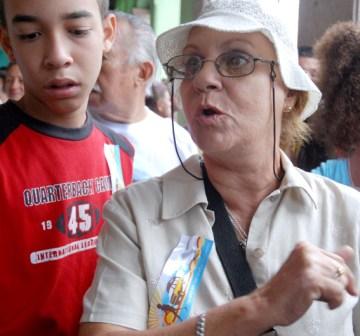The Rise of Yogurt in Cuba

HAVANA TIMES, August 20 (IPS) – Cuba started commercially producing yogurt from cow’s milk in the 1950s, selling it under the name of Balkan yogurt as a nod to the Balkan states of Eastern Europe. At the time there was not much of a tradition of eating yogurt on the island and the product was only sold in Havana at specialty shops and at a higher price than pasteurized cow’s milk.
The yogurt was made following the classic natural model using lactobacillus acidophilus bulgaricus and streptococcus thermophyllus bacteria.
With the Cuban Revolution in 1959, yogurt began to be widely distributed and went from being a barely consumed product to an indispensable supplement in university cafeterias and boarding school dorms that started to spread across the island in the 1970s.
Eventually, production was carried out throughout the nation and yogurt became a regular Cuban food item offered in a wide range off flavors of domestically grown fruits such as orange, banana and mango, and even imported fruits such as strawberry, one of the most popular flavors.
Eastern Europeans Bring Food Habits to Cuba
Cuban’s consumption of yogurt no doubt grew as the island developed strong ties and scientific exchanges with Eastern Europe.
The large number of Eastern European technicians and consultants who arrived to Cuba brought with them their dietary habits, including a love for yogurt, and this became an important source of nutrition for Cubans and the favorite dairy product for many.
Beginning in the 1970s, yogurt became recognized as a good substitute for milk for segments of the population who were lactose intolerant and as a remedy, as the bacterium in yogurt breaks down lactose.
Governmental Support
Near the end of the 1970s, the Cuban government built a modern facility to serve as the Research Institute for the National Food Industry. The center played a central role in developing new production models and diversifying food groups to nourish the Cuban population.
Founded in 1977 and sponsored by the Food and Agriculture Organization of the United Nations and cooperation agencies from Sweden, Denmark and Holland, this modern center is built upon 20 hectares in the municipality of La Lisa, 25 km west from downtown Havana.

Today, the National Food Industry Research Center is one of the most important of its type in the Caribbean and Central America, and has successfully standardized and offered advanced training to specialists in the field.
The center has played an important role in introducing new food varieties to the population, including dairy products such as soy milk and yogurt, and buffalo milk and yogurt.
The widespread introduction of soy milk first for the lactose intolerant segment of the population and then as a regular product for all Cubans was one of the important achievements of this institute.
Soya Replaces Milk in Making Yogurt
In the 1990s, the island was sent into a full-on crisis with the disintegration of the Eastern European Socialist Camp and a hardening of the decades-long US blockade. The Cuban government responded with a series of measures during what was called the Special Period. The Ministry of Food and Health began to produce soy yogurt on an industrial scale, especially for children and teenagers, as it became harder and harder to import powdered milk.
Rich in protein, carbohydrates, minerals (calcium, phosphorus, magnesium and potassium) and vitamins (A and B), soy yogurt became an important source of nutrients. Production has increased over the years and is now widely available in a large variety of flavors.
Soy yogurt is distributed to children from age 7 to 14 and is sold nationwide. Another significant achievement of the Research Institute was the elaboration and introduction of yogurt made from buffalo milk after the first buffalo calves arrived from Vietnam more than two decades ago.
Buffalo milk is richer in protein and energy than cow milk and is known for its nice consistency.
Today, the importance of yogurt in a well-balanced, healthy diet is fully acknowledged by the Cuban health community. The live microorganisms in yogurt help stabilize bacterial flora in the intestines and favor the assimilation of nutrients and healthy fats.
As an important source of protein, carbohydrates, calcium, phosphorus, magnesium, potassium and vitamins A and B, yogurt is also used in Cuba as an important part of the diet of people over the age of 75, who are at high risk of malnutrition.

That’s a nice positive step by Cuba. Soy milk has a lot of health benefits. So use of soy in yoghurt is indeed very beneficial. Regular intake of soy yoghurt by Cubans may help them make a healthy Cuba.
Dear Havana Times,
What a positive story, congratulations….and yes, we all know milk products is good for our health.
I would kindly like to use the opportunity to ask if the journalist who wrote this interesting piece, have knowledge of the cheese and yoghurt production in Cuba. Are there many smaller companies or fewer larger …
I work in a Danish company, which help develop healthy dairy product, we make enzymes to make cheese and friendly bacteria to make youghurt and cheese, including probiotics to make probiotic yoghurt.
We have many loyal customers in Eastern Europe and around the world…and we would be very happy to start doing business in Cuba…
My email is [email protected]
Saludos,
Sten Estrup